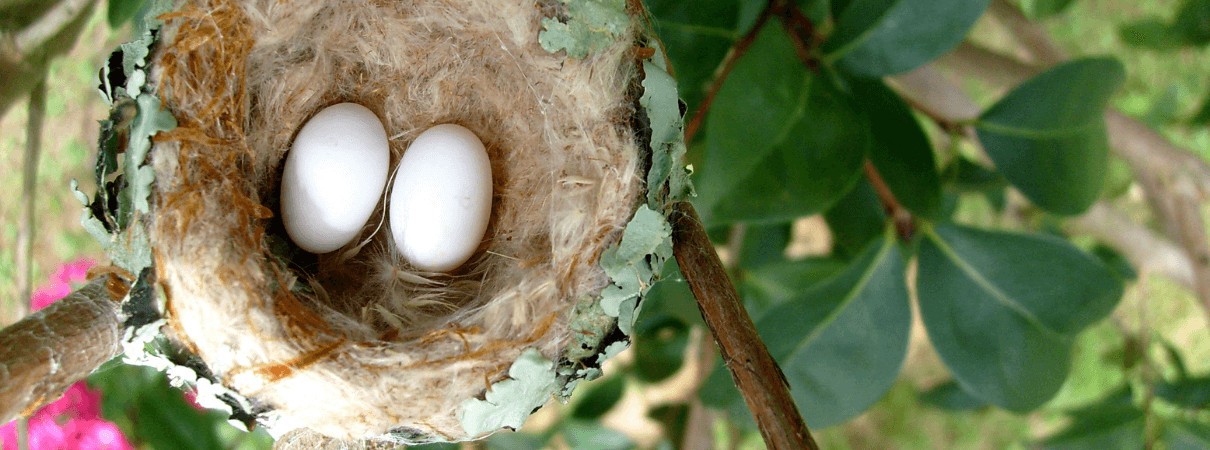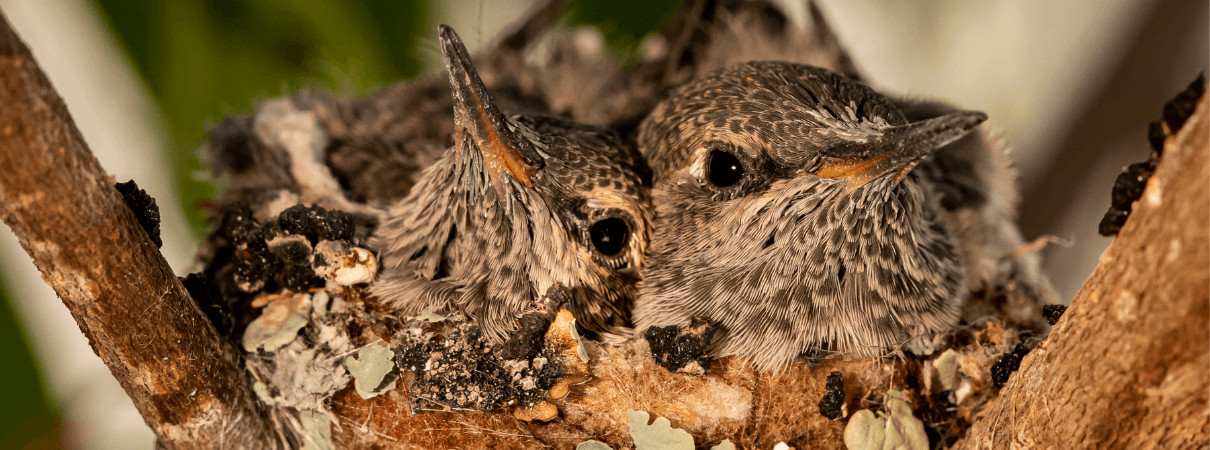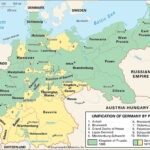Every spring, nature enthusiasts eagerly await the return of hummingbirds. These miniature marvels, with their iridescent plumage and energetic flights, bring a vibrant sparkle to gardens, parks, and even urban landscapes. The specific hummingbird species you might encounter varies by region, but their dazzling beauty is universally captivating. However, beyond their captivating presence, hummingbirds harbor many intriguing secrets, particularly concerning their habitats and nesting behaviors. Despite their frequent visits to our backyards, their nests remain incredibly elusive, camouflaged so effectively that they often escape even the most observant eyes.
To demystify the world of hummingbird habitats and breeding, we’ve compiled a comprehensive guide. If you’ve ever been curious about where hummingbirds truly live, the types of environments they favor, or the intricacies of their nesting habits, then delve in to discover the answers.
Preferred Habitats: Where Hummingbirds Feel at Home
Hummingbirds exhibit specific preferences when choosing their living spaces. While some species, like the adaptable Ruby-throated Hummingbird, have adjusted to human presence, occasionally nesting on structures like wires or plant hangers, the majority still favor natural settings. Their ideal habitats typically include deciduous trees situated near a reliable water source. The dense foliage of trees offers essential protection for both adult hummingbirds and their vulnerable chicks, shielding them from predators and harsh weather conditions. Proximity to water is equally crucial, not only providing a source of hydration but also contributing to a cooler microclimate, especially important in warmer regions.
Furthermore, a readily available food supply is a non-negotiable factor in hummingbird habitat selection. They are highly dependent on nectar-rich flowering plants, making areas near water sources even more attractive, as these locations often support a greater abundance of the plant species hummingbirds rely on. This combination of shelter, water, and food is what defines prime hummingbird real estate.
A Ruby-throated Hummingbird mother diligently cares for her newly hatched chicks in their nest.
Nesting Locations: Hidden Nurseries in Plain Sight
When it comes to nesting, hummingbirds demonstrate a penchant for discreet locations. Due to the diminutive size of their nests, you won’t typically find them perched in the main crooks of large branches. Instead, they tend to establish their nesting sites on slender, more concealed branches, often about a foot away from the main tree trunk, frequently choosing a fork in the branch for added stability. This strategic placement provides a balance of support and camouflage, crucial for protecting their fragile nests.
Creating a Hummingbird-Friendly Habitat: Attracting Nesting Pairs to Your Yard
Unlike some common backyard birds that readily utilize birdhouses, hummingbirds do not nest in artificial structures. However, you can significantly enhance your yard’s appeal to nesting hummingbirds by adopting habitat-friendly practices. Cultivating a garden with native flowering plants is paramount, providing a natural nectar source and attracting insects, another vital food component for hummingbirds, especially during breeding season. Ensuring a consistent water source, such as a birdbath or a gentle fountain, further increases the attractiveness of your yard. Crucially, avoid using pesticides and herbicides, as these chemicals can harm hummingbirds directly and eliminate the insects they depend on for sustenance. Supplementing natural food sources with well-maintained hummingbird feeders can also be a helpful strategy to draw these enchanting birds to your property and encourage them to consider nesting nearby.
Nest Dimensions: Miniature Masterpieces of Engineering
Hummingbird nests are remarkably small, generally measuring just a little over an inch in diameter. The precise size can vary depending on several factors. Naturally, larger hummingbird species tend to construct slightly larger nests compared to their smaller counterparts. The materials used in construction and the specific location of the nest can also influence its final shape and size. Despite their small size, these nests are marvels of natural engineering, perfectly designed to cradle eggs and nurture hatchlings.
 Hummingbird Nest in Trees
Hummingbird Nest in Trees
A hummingbird nest, barely larger than a thimble, securely nestled on a tree branch, showcasing the tiny scale of these avian homes.
Nesting Materials: Nature’s Soft and Strong Components
Hummingbirds prioritize softness and flexibility when building their nests. To achieve this, they meticulously gather a diverse array of natural materials. Similar to most bird species, they begin with a foundation of small twigs and plant fibers, often using leaves to create a base structure. However, hummingbirds go a step further, incorporating moss and lichen into the nest walls. These additions serve a dual purpose: providing exceptional camouflage, blending the nest seamlessly with its surroundings, and adding extra softness for insulation and comfort. But the secret ingredient that truly elevates hummingbird nest construction is spider silk.
The Art of Nest Building: A Delicate and Laborious Process
The task of nest construction falls solely upon the female hummingbird. She dedicates up to a week to meticulously craft her flexible, cup-shaped nest. The process begins with creating a foundational layer of plant materials. Then, the ingenious use of spider silk comes into play. The female hummingbird gathers spider silk and skillfully rolls it over the developing nest structure. This remarkable material acts as a natural binding agent, holding the nest together with incredible strength and anchoring it firmly to its chosen branch. The spider silk is carefully interwoven into crevices and around the nest’s base, ensuring a secure attachment. This elaborate construction process demands several hours of dedicated work each day.
Nest Camouflage: Nature’s Ingenious Disguise
A completed hummingbird nest is a testament to natural camouflage. Adorned with tightly compacted green lichen, moss, and interwoven spider silk, it often resembles a small, inconspicuous knot on a tree branch. This remarkable resemblance to natural tree features, combined with its diminutive size and strategic placement, provides exceptional camouflage, effectively safeguarding hummingbird eggs and chicks from potential predators.
Nesting Season: Timing Varies with Location
The time of year when hummingbirds initiate nesting and egg-laying is influenced by geographic location and climate. In the warmer southern regions of the United States, hummingbird breeding can commence as early as March, taking advantage of the early bloom of spring flowers. Conversely, in cooler, more northerly areas or higher-altitude montane regions, nesting activities may be delayed until July, aligning with the later arrival of favorable weather and food availability. Intriguingly, some western species, such as Anna’s Hummingbird, exhibit even greater adaptability, sometimes beginning their nesting cycle with the onset of winter rains as early as November, showcasing their ability to exploit available resources year-round in milder climates.
A downy hummingbird chick patiently awaits its mother’s return, nestled safely within its camouflaged nest.
Spotting a Hummingbird Nest: A Test of Observation Skills
Hummingbird nests are notoriously difficult to locate. As previously mentioned, their exceptional camouflage and well-hidden locations make them masters of concealment. The most promising places to begin your search are on slender, forked branches and within dense shrubs or bushes, where they are less exposed. Remember to look for anything that resembles a natural knot or burl on the tree; this could be a cleverly disguised hummingbird nest.
However, the most effective strategy for finding these hidden nests is often through keen observation of hummingbird behavior. From a respectful distance, carefully watch for female hummingbirds. If you observe a female repeatedly visiting the same area or branch, particularly carrying nesting materials, it’s a strong indication that she is in the process of nest construction. During the incubation period, females will only leave their nests for brief foraging trips. If you are fortunate enough to spot a female during this phase and can discreetly follow her flight path, she may unknowingly lead you to her well-guarded nest.
Respecting Hummingbird Nests: Observe from a Distance
It is crucial to emphasize that you should never touch a hummingbird nest. In many regions, including the United States, disturbing or interfering with an active bird nest is illegal under wildlife protection laws. If you are lucky enough to discover a hummingbird nest, the best course of action is to observe it from a distance and appreciate the marvel of nature unfolding. Using binoculars will allow you to enjoy clear views of the female hummingbird and, eventually, the young chicks, without causing any disturbance. Maintaining a respectful distance is essential to minimize stress on the birds and avoid inadvertently attracting the attention of predators, such as jays or squirrels, to the nest’s location.
 Two baby hummingbirds in a nest
Two baby hummingbirds in a nest
Two wide-eyed hummingbird chicks patiently wait for their next meal, highlighting the vulnerability of these young birds in their early stages of life.
Nighttime Habits: Where Do Hummingbirds Sleep?
Hummingbirds, like most creatures, need to rest and sleep. While they often choose to sleep near or on their nests, this is not always the case. They may also select a sheltered perch on a branch or within dense foliage for their nighttime slumber, prioritizing safety and protection from the elements.
Nest Reuse: A Fresh Start for Each Brood
Hummingbird nests are not designed for long-term use or re-nesting. Due to their flexible construction, which allows the nest to expand as the chicks grow, they eventually become stretched and lose their structural integrity. This makes them unsuitable for reuse in subsequent nesting attempts. Therefore, for each new clutch of eggs, hummingbirds diligently build a brand new nest, starting the intricate process anew.
How You Can Help Hummingbirds Thrive
Everyone can contribute to hummingbird conservation and ensure these dazzling birds continue to grace our world.
Organizations like the American Bird Conservancy (ABC) and their partners are actively working to protect and improve bird habitats on a large scale. Supporting these organizations through donations directly aids their conservation efforts.
Advocating for bird-friendly policies with your elected officials is another impactful way to help. Urge lawmakers to prioritize legislation that protects bird habitats and promotes conservation measures. ABC’s Action Center provides resources and tools to make your voice heard.
On a more personal level, creating a hummingbird-friendly habitat in your own yard can make a significant difference. Refer to resources like ABC’s “Hummingbird Paradise” guide for practical tips on planting native flowers, providing water sources, and creating a welcoming environment for these tiny wonders. Exploring ABC’s Bird-Friendly Life page offers a comprehensive list of everyday actions you can take to support birds in general.
The American Bird Conservancy’s Commitment to Hummingbird Conservation
The American Bird Conservancy is deeply committed to the conservation of hummingbirds, particularly the most vulnerable species. Working in collaboration with conservation partners and local communities, ABC strives to secure the future of endangered hummingbirds and their habitats.
A significant aspect of ABC’s work involves establishing protected reserves. In partnership with organizations throughout Latin America and the Caribbean, ABC has created an impressive network of 93 reserves, encompassing over 1 million acres. These reserves provide vital sanctuary for 234 hummingbird species, safeguarding critical habitats from deforestation and development.
Habitat restoration is another cornerstone of ABC’s hummingbird conservation strategy. To date, ABC has spearheaded the planting of over 6 million trees and shrubs, revitalizing degraded habitats and enhancing food sources for hummingbirds. Plans are underway to plant an additional 70,000 trees and shrubs, further expanding and strengthening these crucial habitats.
ABC also plays a vital role in supporting field research expeditions. These expeditions are crucial for discovering new hummingbird populations, monitoring known populations, and gaining valuable insights into their ecological needs and potential threats. This ongoing research informs conservation strategies and ensures that efforts are targeted and effective.
 |
Kathryn Stonich is an educator and passionate advocate for birds, contributing her expertise to raise awareness and appreciation for avian life. |
|---|

